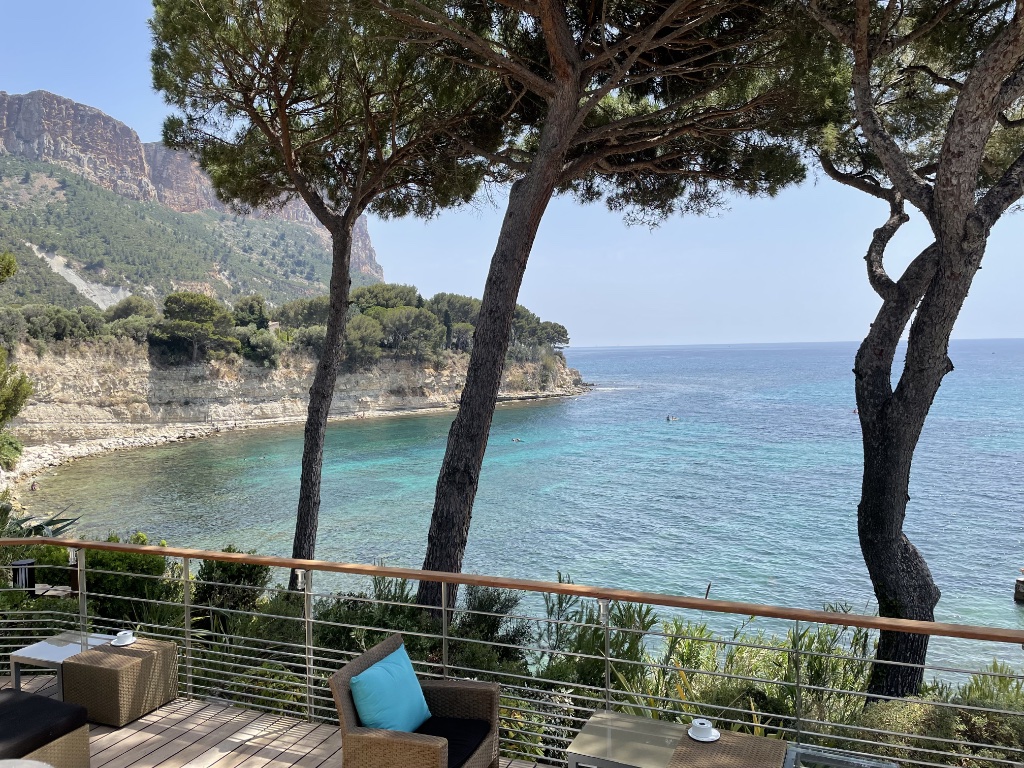
It’s summer. It’s hot (31 degrees Celsius). Tourists are crowding the dockside and beaches of Cassis, a Provençal fishing village in the South of France. What better escape than a splurge on local fish and produce at La Villa Madie, set on a cliff above the bay (or calanque), where the winds blow cool, and there is plenty of room to spread out on the wide-open terrace.
I am not usually one for starred restaurants and tend to look for value in signs other than price, but La Villa Madie is well worth it if you seek a killer view, outdoor dining, inventive cuisine and a committed Mediterranean menu. After four hours à table, satiated and lulled into a state of complete relaxation, I can only say that it was entirely worth it.
Run by Norman chef Dimitri Droisneau and his partner, Marielle, who took over the restaurant (and the Brasserie du Corton) in 2013 after earlier stints at La Tour d’Argent, Lucas Carton, and La Réserve de Beaulieu (farther up the coast, near Monaco), La Villa Madie was just this year awarded its third Michelin star, only the fourth restaurant in the South of France to attain that level of recognition.
There were three menus to choose from at lunchtime. My partner and I went for the middle option, “L’Espassade Cap Canaille,” named for the sea cliff facing the restaurant on the other side of the bay.
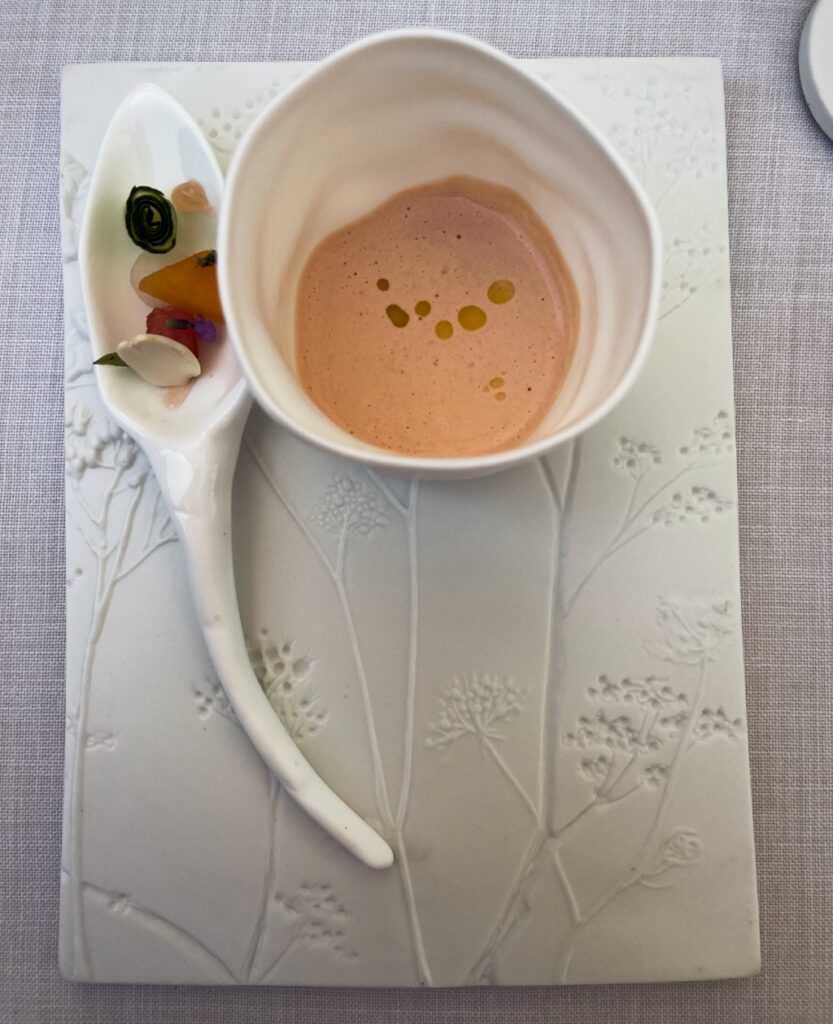
The meal opened with a very small but refreshing pine/lemon drink, inspired by the scents of the garrigue, (Mediterranean scrubland), accompanied by several delicious mini-sandwiches made with crackers and seaweed filled with local ingredients (fennel, anchovies, sardines) and soup tasters, including a lovely variation on Spanish salmorejo (tomatoes, bread and garlic).

Sardines also featured in the next course (lou sardo in the Provençal language), whose variations on a theme included fish eggs, salted gelée, sashimi, and a tiny fried sardine skeleton that the waiter implored us to eat as it was the chef’s favorite. We were glad we did.
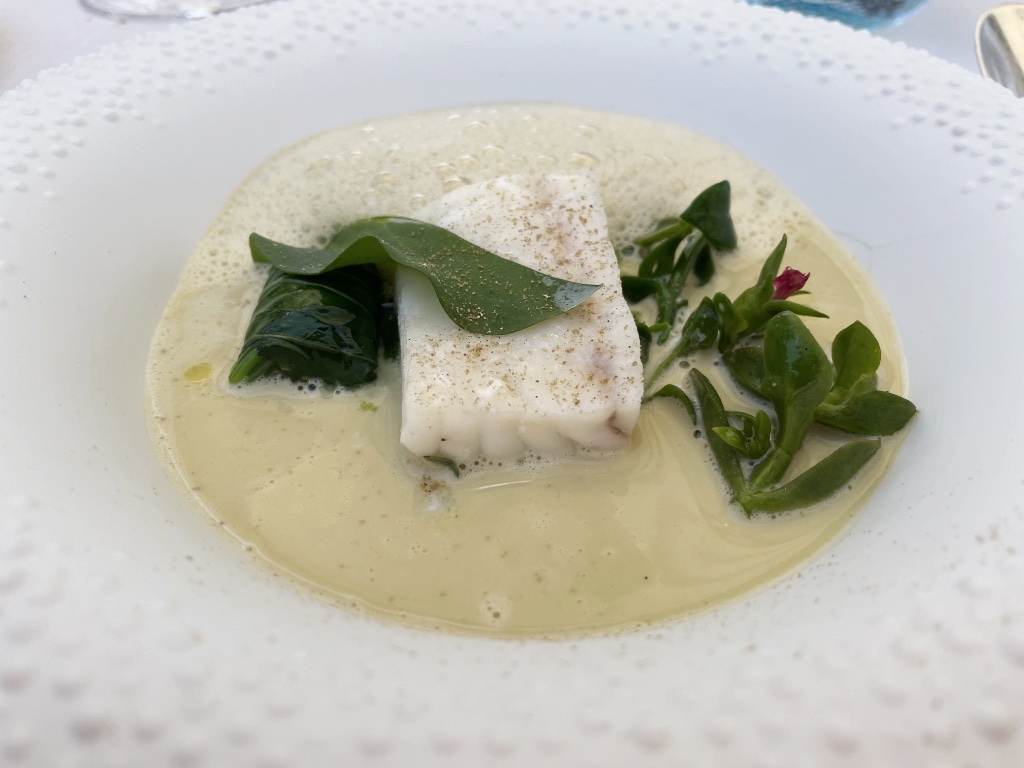
Then came halibut (lou roun), surrounded by iodized foam, an oyster wrapped in spinach and delectable bits of greenery with chewy buds.
That was followed by another type of fish, rouget (red mullet, commonly used in bouillabaisse), and different kinds of bread baked on the premises.
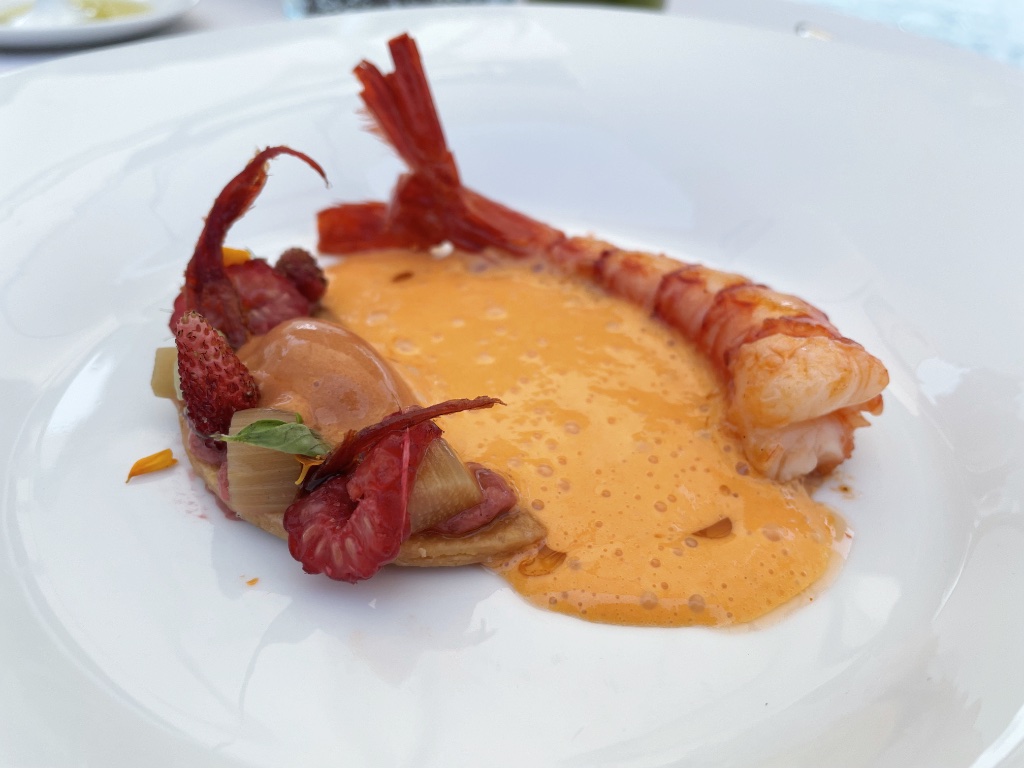
Next came one of my favorites: lou carambou, which consisted of a large prawn on one side of the plate and berry/rhubarb tart on the other, separated by a foam of tomatoes and Provençal herbs. This might sound unorthodox and even unappealing, but – take my word for it – it was sublime.
The meat course, lou counièu, or rabbit and shrimp, served with chanterelles, apricots, and zucchini, came with two contrasting sauces. Another inspired dish.

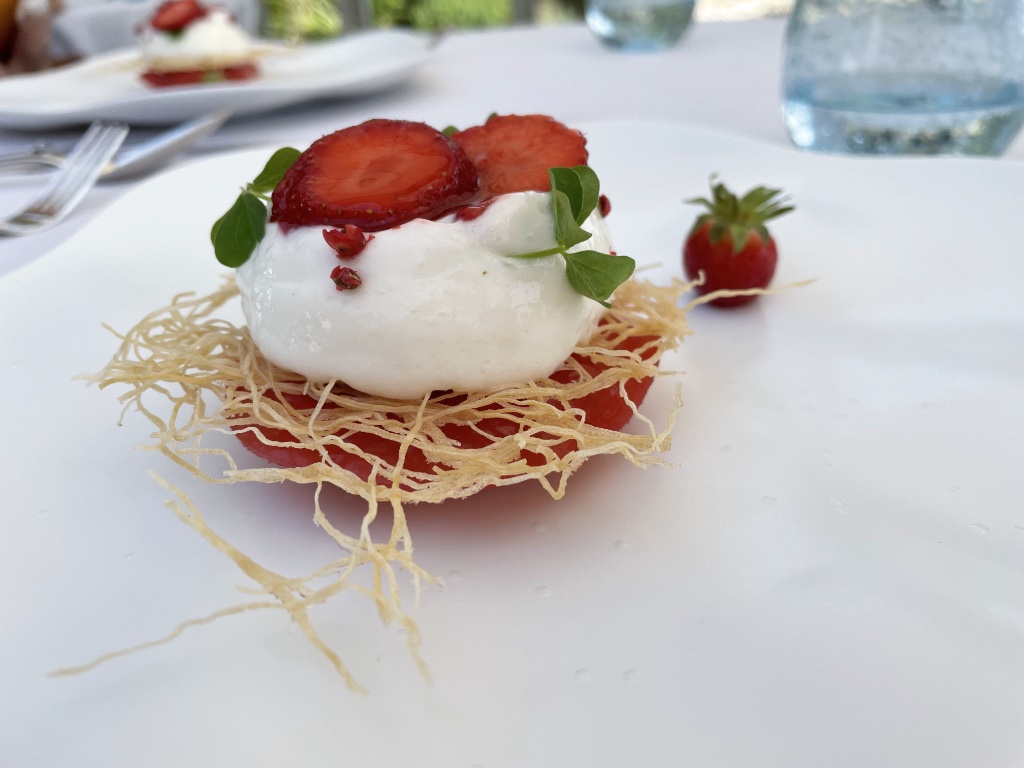
Two desserts followed: a deconstructed lemon meringue pie (lou limo) and a strawberry tart (lou frago) that was nothing short of heaven.
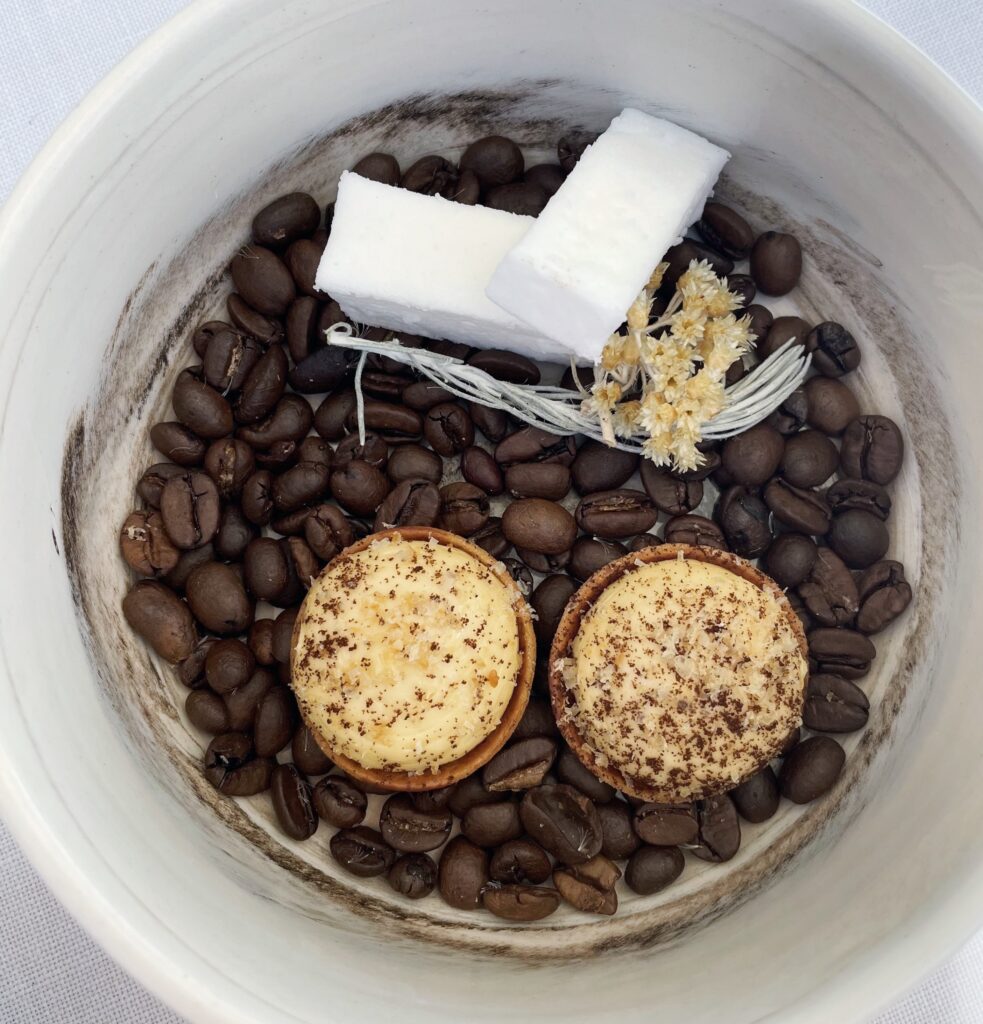
It was almost as if they know they were serving a dessert aficionado: the two desserts were supplemented by several other plates of sweets, including a take on guimauve (marshmallow), custard tarts and some other playful offerings, beautiful to look at and better to eat, once again made with traditional Provençal products.
One of the best meals I have ever had ended with a table visit from the chef and a takeaway sugar-crusted brioche that brightened the travels that followed.
I have only two suggestions for improving the experience of eating at La Villa Madie. First of all, each dish was delivered with the server’s long, lyrical and not-always-comprehensible description in French of its ingredients and inspirations, pretty much impossible to simultaneously and accurately translate for my dining companion. A printed version would be oh-so appreciated.
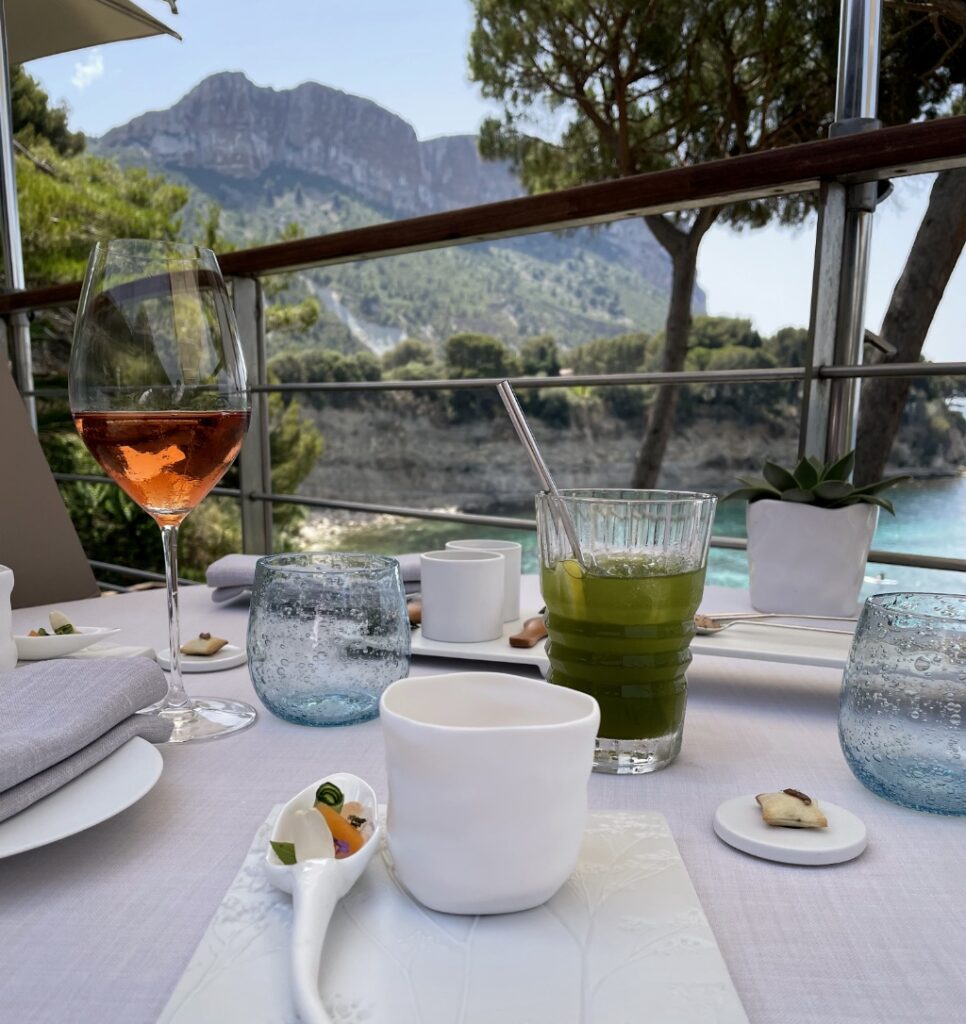
The other small problem involved the drinks service. Three beverages were recommended for our menu, along with an extensive wine list: Thiénot Brut rosé champagne, a fruit drink based on oseille (sorrel) and rose petals, and peach iced tea. I ordered the fruity organic champagne, a perfect match for the meal and the weather, and stuck with it throughout. My partner went for the sorrel drink and pronounced it one of the most refreshing he had ever tasted, but it was hard to get the servers to refill our glasses in spite of their constant comings and goings.
A pity, since this was a stellar eating experience in every other way, a true celebration of the sights, smells, textures and products of Provence, enhanced by the beauty of the setting.
Favorite
Hear, hear on the incomprehensible presentation of dishes. Enough already. Dining recently at the Jules Verne, I had to ask a poor sub-sub waiter (the only woman present among the staff) to slow down and repeat her spiel, which was embarrassing for all of us. She had to do this at every table, for every plate served, of which there were seven. A heavy French accent did not help our comprehension. My idea of hell – and her dour expression showed that it was also hers.
Thanks for your comment, Susan!